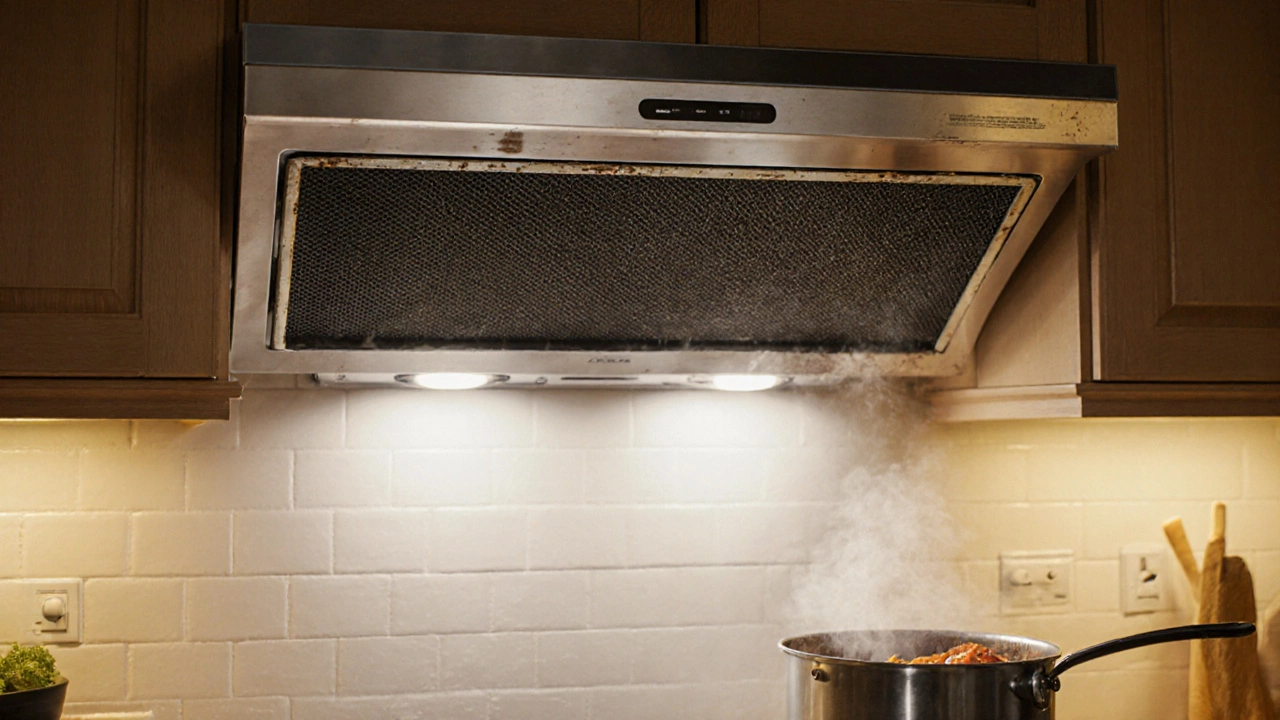
Step‑by‑step guide to unblock a kitchen extractor fan, clean filters, clear ducts, check motor and safety switches, plus maintenance tips and FAQs.
Ever wonder why your kitchen still smells like fried food after you’ve turned the fan off? That's a sign the extractor fan isn’t doing its job properly. A clean, well‑maintained fan removes grease, steam and odors, keeping your cooking area fresh and safe. In this guide we’ll show you quick ways to clean the fan, spot trouble early, and decide when it’s time to call a professional.
The fan does more than just chase smells away. It pulls hot, moist air out of the kitchen, preventing condensation that can lead to mould on walls and cabinets. It also stops grease from settling on light fittings and the ceiling, which can become a fire hazard over time. If the fan is clogged, the motor works harder, uses more electricity and can overheat – a recipe for breakdowns and costly repairs.
Most homeowners forget about the fan until a strange smell or a weak airflow appears. Regular checks keep it efficient and extend the motor’s life. Think of it like a car service: a quick clean now saves a big repair later.
1. Turn off power. Before you touch anything, switch off the fan at the circuit breaker or unplug it. Safety first.
2. Remove the filter. Most kitchen fans have a metal or charcoal filter that slides out. Soak it in hot, soapy water for 10‑15 minutes. If it’s a charcoal filter, give it a gentle shake to dump loose dust, then rinse lightly. Let it dry completely before reinstalling.
3. Clean the fan blades. Use a soft brush or an old toothbrush to scrub away grease buildup on the blades and housing. A mix of warm water and a few drops of dish‑washing liquid works well. For stubborn spots, spray a little kitchen degreaser, wait a minute, then wipe clean.
4. Check the motor area. Dust can settle around the motor vents, throttling airflow. Vacuum the vent with a narrow nozzle or blow compressed air through it. If the motor feels hot after a few minutes of use, it may need professional attention.
5. Re‑assemble and test. Put the filter back, secure the fan cover and switch the power on. Run the fan on high for a minute – you should hear a steady, strong whir without rattles. If the noise is louder than usual or the airflow feels weak, it’s time to call an expert.
Doing this simple cleaning every 2‑3 months keeps the fan humming efficiently, reduces your energy bill and stops nasty smells from lingering. For busy households, set a calendar reminder – a few minutes twice a year makes a big difference.
If you notice any of these red flags, don’t wait:
These signs usually mean the motor or wiring is failing. Trying to fix it yourself can be risky, especially with electrical components. A qualified appliance repair technician can diagnose the issue, replace a motor, or advise if a full fan replacement is more cost‑effective.
At South Shields Appliance Repair Services we specialise in extractor fan motor cleaning and repair. Our local team knows the common models on the market and can get your kitchen back to fresh in no time. Give us a call when you need a professional eye – we’ll sort the fan so you can get back to cooking without the lingering odour.
Bottom line: a clean extractor fan means a cleaner kitchen, lower energy use, and fewer emergency repairs. Schedule a quick clean, watch for warning signs, and let the pros handle the tough jobs. Your kitchen will thank you.

Step‑by‑step guide to unblock a kitchen extractor fan, clean filters, clear ducts, check motor and safety switches, plus maintenance tips and FAQs.

Replacing a kitchen extractor fan might seem daunting, but with the right guidance, it's a task many homeowners can tackle. This article provides a comprehensive guide on how to safely and effectively replace your kitchen extractor fan yourself. It covers essential tools, the replacement process, common challenges, and helpful tips to ensure success. Whether you're looking to upgrade your kitchen efficiency or address persistent ventilation issues, this guide will help you navigate the process with confidence.